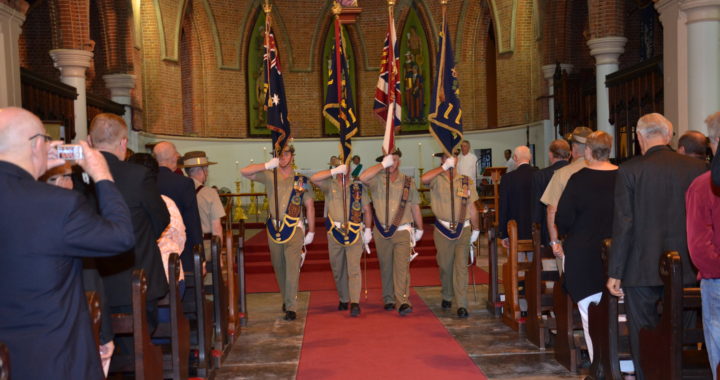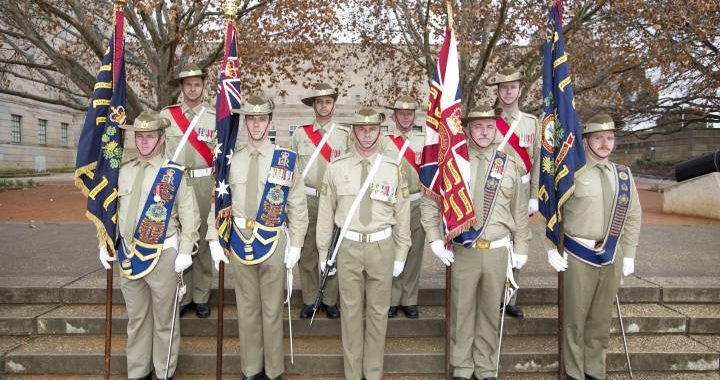Kennedy Regiment Commemorative Service
St James Cathedral, North Ward
Sunday, October 16, 2016, beginning at 9.30 a.m.
FOR AN Infantry Regiment, there has to be a significant occasion for the Queen’s and Regimental Colours to be paraded in public — not only are they revered by all Australian Infantry Regiments, including battalions of the Army Reserve — they are closely guarded and secured.
Two sets of Colours — the Queen’s and Regimental — are carried by all Australian Infantry Regiments, including battalions of the Reserve, and by certain training establishments such as the Corps of Staff Cadets and University Regiments.
Originally the Colour was the rally point when, during the noise and confusion of battle, it was the focal point of the Regiment; even if the commander was killed, hope was always present whilst the Colours remained intact. On the verge of impending defeat, the troops would concentrate around the Colours, which would become the scene of its last defence. From such times, records of epic gallantry and acts of heroic self-sacrifice have been associated with the Colours, whose safety engendered these acts.
The full history of a regiment is contained within written records, but as these are not portable in a convenient form, the Colours, emblazoned with distinctions for long and honourable service, are presented as a silken history, the sight of which creates a feeling of pride in soldiers and ex-soldiers alike.
Infantry Colours are made of silk, with Royal Blue being reserved for units who have been granted the title ‘Royal’, whilst dark green is for non-Royal Regiments. Prior to 1960, only one battalion had the prefix ‘Royal’, that being the 6th Infantry Battalion, The Royal Melbourne Regiment. Now that all Reserve battalions are part of Royal Regiments, they are entitled to carry blue Regimental Colours. University Regiments continue to carry Colours of dark green silk.
Also prior to 1960, the Royal Australian Regiment was the only multi-battalion Regiment in the Army. In that year, a complete re-organisation of the Citizen Military Force’s saw 31 infantry battalions combined into six regiments comprising 20 battalions. Each new regiment was granted the title ‘Royal’ and was based entirely upon the State in which it was located.
Since that time, the Reserve battalions of the various states have undergone many reductions in size in line with government policy. Many of these reductions have resulted in the battalions being linked to preserve traditional links with the original units of the 1st Australian Imperial Force.
As one of the longest continuously serving Units in the Australian Army, and to mark the 130th anniversary of the proclamation of the Kennedy Regiment, Townsville’s own 31st Battalion has been granted permission to Parade its Queen’s and Regimental Colours at a Kennedy Regiment Commemorative Service at St James Cathedral, North Ward, on Sunday, October 16, 2016, beginning at 9.30 a.m.
President of the 31st Infantry Battalion Association, Colonel Greg Stokie (Retired), said he has been advised by the RSM of the 31st/42nd Battalion Royal Queensland Regiment, WO1 Robert Maitland, that soldiers of the Battalion will Parade their Queen’s and Regimental Colours — some of whom were involved in the official Australian Defence Forces Colour Parties that recently performed in ceremonies in Paris, Pozieres and other venues on the Western Front to mark this year’s Centenary of the First World War in France.
Colonel Stokie said 2016 has been a significant one for the 31st Infantry Battalion Association.
“Apart from being the only Australian Infantry Unit of the 5th Division of the Western Front which is still serving, in July this year a group of Association members travelled to France to pay their respects to the soldiers of the 31st Infantry Battalion, AIF, who suffered heavily during the Battle of Fromelles.
Colonel Stokie also noted that the 31st Battalion was the first Militia Unit to be mobilised in World War I and sent to Thursday Island as a precaution because New Guinea was then a German colony.
The Commemorative Service will feature a Reflections Address delivered by Major John Lavery, OAM, Manager of the Army Museum North Queensland situated at at Kissing Point.
Major Lavery is expected to highlight the link between early research completed by the late Captain Bob Burla, in his role as unofficial museum historian, and the work of the modern Museum in its role of collecting and showcasing military memorabilia and stories relative to the history of the Army in North Queensland.
This will be the first year that the two Units have joined together in the Commemoration Service. Its President, WO1 Darryl Prizeman (Ret’d), will travel from Keppel Sands to read the First Lesson.
The Service will be conducted by the Dean of St James Cathedral, the Very Reverend Canon Rod Macdonald, a former long-serving Army Padre, with the Bishop of North Queensland, the Right Reverend W.J. Ray delivering the Sermon.
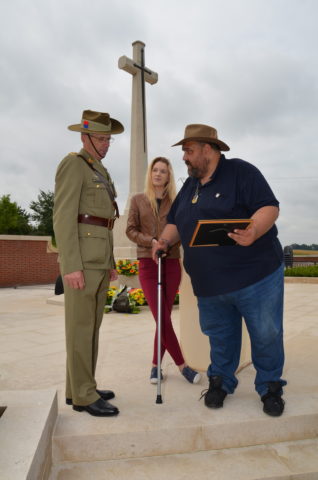
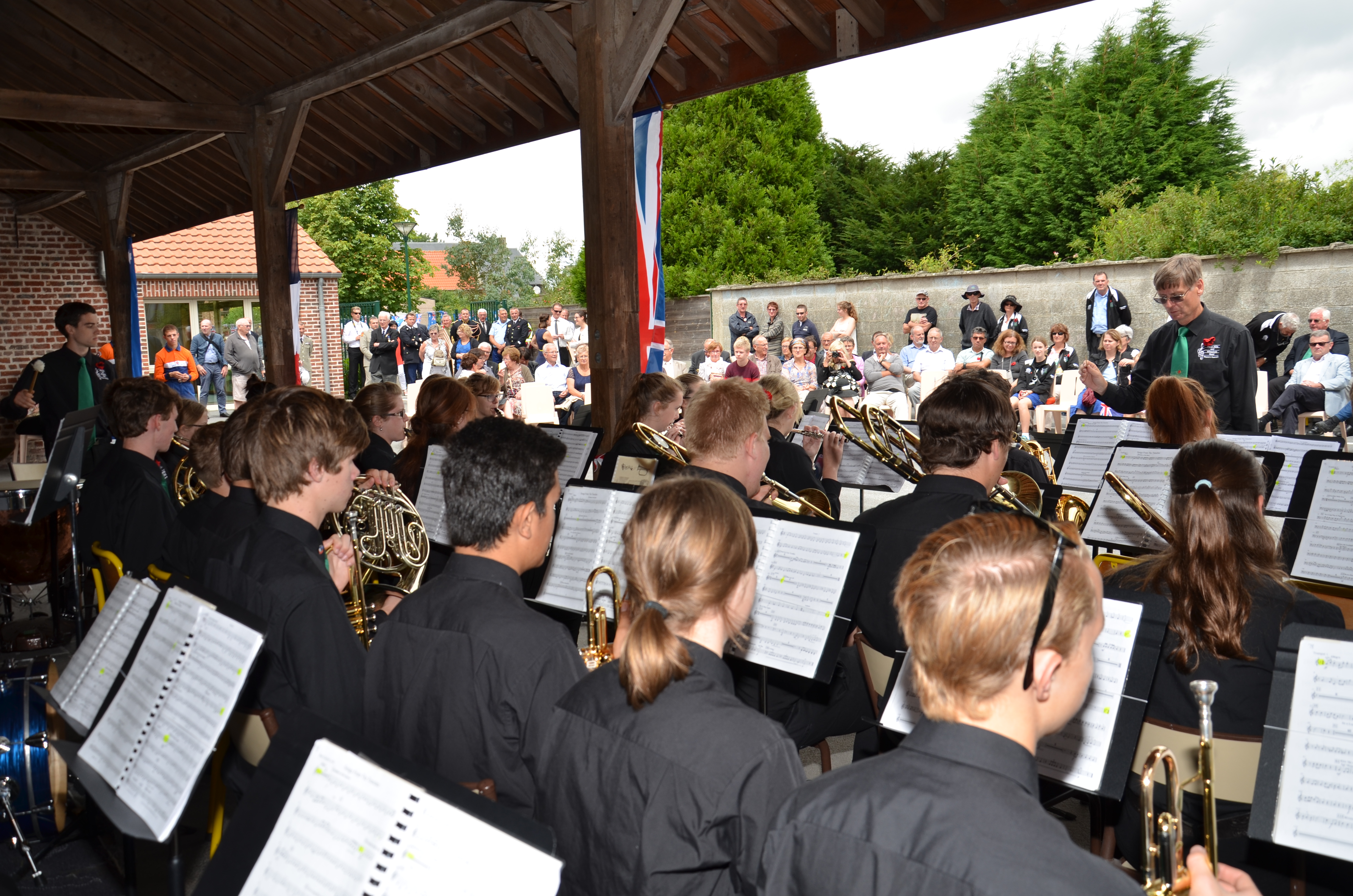
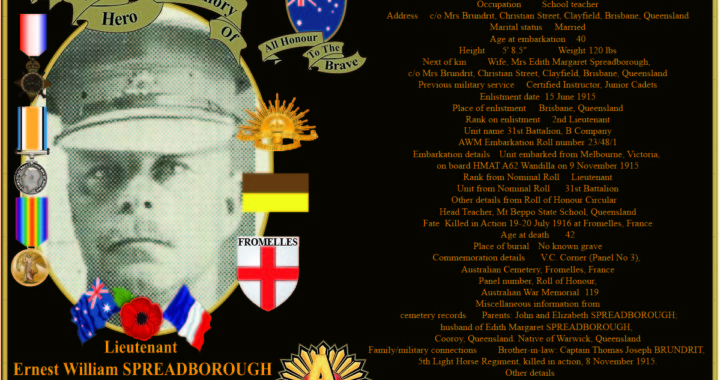

 Also in attendance were visitors from Townsville, Ayr, Charters Towers and Mareeba.
Also in attendance were visitors from Townsville, Ayr, Charters Towers and Mareeba.